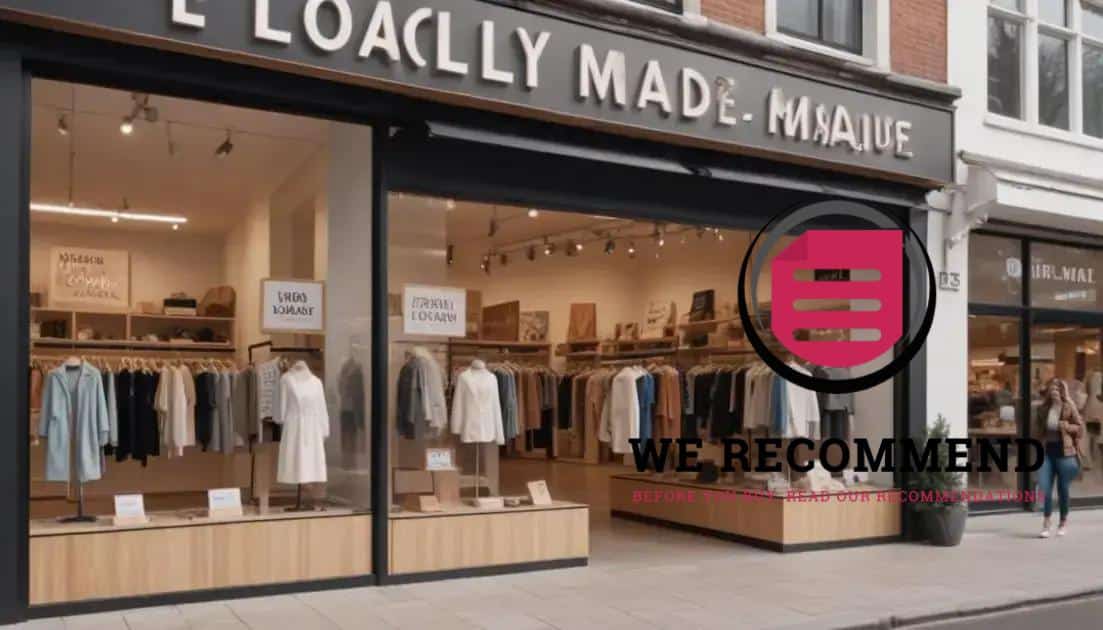Fast fashion tariffs USA 2025: What you need to know

Anúncios
Fast fashion tariffs in the USA will raise clothing prices, prompting consumers to prioritize sustainable shopping and local retailers to adapt by promoting ethical practices and exploring new business models.
Fast fashion tariffs USA 2025 are set to create significant waves in the clothing industry. But what does this mean for shoppers and brands alike? As we explore these upcoming changes, you might find some surprising insights that could inform your next purchase.
Anúncios
Understanding fast fashion and its impact
Fast fashion refers to the rapid production of trendy clothing at affordable prices. This model allows consumers to buy the latest styles without breaking the bank. However, the environmental impact of this industry is significant.
Understanding fast fashion involves recognizing several key components, including:
Anúncios
- The speed of production and its effect on natural resources.
- The quality of materials often used, which may contribute to waste.
- The labor practices involved in creating fast fashion items.
The Environmental Impact
The fast fashion industry contributes to massive amounts of waste due to the short lifecycle of its products. Clothes are often discarded quickly, leading to overflowing landfills.
According to the United Nations Environment Programme, the production of garments uses large quantities of water and energy, harming our planet.
Overview of 2025 tariff changes
The upcoming 2025 tariff changes in the USA are expected to significantly alter the landscape of the fashion industry, particularly the fast fashion sector. These changes will be aimed at addressing environmental concerns and promoting fair labor practices.
Tariffs are taxes imposed on imported goods. By increasing tariffs on fast fashion items, the government intends to:
- Encourage manufacturers to produce more sustainably.
- Support local businesses by leveling the playing field.
- Reduce excessive waste associated with fast fashion.
What to Expect
As the tariffs take effect, consumers may notice higher prices on affordable clothing. This change aims to discourage overconsumption and promote better manufacturing practices.
According to the U.S. Department of Commerce, the goal is to create a more sustainable fashion industry while ensuring that workers are treated fairly.
How tariffs affect consumer prices
Tariffs play a crucial role in determining consumer prices for clothing and other goods. When tariffs are imposed on imports, the cost of these products typically rises. This is especially true for the fast fashion industry, where margins are already thin.
Here’s how tariffs can affect what consumers pay:
- Higher production costs lead to increased prices for retailers.
- Retailers often pass these costs onto consumers, making items more expensive.
- This can lead to fewer affordable options in the market.
Economic Impact on Consumers
As tariffs drive up prices, consumers may find themselves paying more for clothing that used to be affordable. It also encourages consumers to consider buying locally made products, which may cost more but support local economies.
Reports from the U.S. Chamber of Commerce suggest that a rise in tariffs can lead to an overall increase in inflation, affecting household budgets.
Impact on local retailers

The changes in tariffs, especially those impacting the fast fashion industry, can have a profound impact on local retailers. These businesses often compete with larger companies that import cheaper goods.
As tariffs increase the cost of imported clothing, local retailers may find new opportunities, including:
- Increased demand for locally made products due to higher import prices.
- A shift in consumer preferences towards sustainability and ethical sourcing.
- The chance to promote unique, higher-quality items that stand out from mass-produced options.
Challenges Faced by Local Retailers
However, local retailers also face challenges, such as:
- Higher operational costs if they rely on imported materials.
- The need to compete on price with larger retailers who can absorb costs more easily.
- Ensuring they maintain a strong customer base to survive in a competitive market.
Resources from the U.S. Small Business Administration highlight the importance of adapting to changes and finding niches in the market to thrive.
Sustainability concerns with fast fashion tariffs
Sustainability is a pressing issue in the fashion industry, especially when discussing fast fashion tariffs. These tariffs aim to reduce the consumption of cheap, mass-produced clothing that contributes to environmental harm.
Several key concerns arise regarding sustainability:
- Increased waste due to the rapid turnover of clothing styles.
- High levels of water usage and pollution in garment production.
- Negative impact on workers’ rights and conditions in low-cost manufacturing countries.
Positive Changes Through Tariffs
While tariffs may raise prices, they can drive consumers to make more sustainable choices, such as:
- Investing in higher-quality, longer-lasting clothing.
- Supporting brands that prioritize ethical practices.
- Encouraging a shift towards second-hand shopping and upcycling.
According to the United Nations, promoting sustainable patterns of consumption is vital for preserving the planet and improving social equity.
Potential shifts in consumer behavior
As fast fashion tariffs come into effect, we may see significant shifts in consumer behavior. These changes can influence how people shop and what they prioritize when buying clothing.
Some factors that could affect consumer choices include:
- Increased awareness of environmental impact due to higher prices on fast fashion items.
- A growing preference for sustainable brands that practice ethical production.
- A rise in interest in second-hand shopping and vintage clothing as alternatives.
Implications for Retailers
Retailers may need to adapt to these changes by:
- Offering eco-friendly product lines that appeal to conscious consumers.
- Emphasizing transparency in their supply chains to build trust with customers.
- Engaging in marketing campaigns that highlight sustainability efforts.
Research from the Consumer Reports indicates that consumer preferences are shifting towards more ethical shopping choices, reflecting a growing concern for the planet and community.
Global impact of USA tariffs
The global impact of USA tariffs extends far beyond American borders. When the U.S. imposes tariffs on imported goods, other countries often respond, leading to a ripple effect in international trade.
Some key effects include:
- Increased prices for imported goods, which can lead to inflation worldwide.
- Strain on relationships between the U.S. and its trading partners, affecting diplomatic ties.
- Potential trade wars that could disrupt global supply chains and market stability.
Effects on Supply Chains
Tariffs can significantly alter how companies source materials. Businesses might seek alternative suppliers or shift production to avoid tariffs. This can lead to:
- Higher costs for manufacturers that depend on imported materials.
- Changes in product availability and options for consumers around the globe.
- Opportunities for local businesses in countries affected by U.S. tariffs.
According to the World Trade Organization, understanding the global implications of tariffs is essential for navigating international trade policies.
Future of the fashion industry

The future of the fashion industry is evolving rapidly, influenced by changing consumer preferences, environmental concerns, and technological advancements. As the impact of fast fashion tariffs unfolds, the industry is likely to shift in several key areas.
Some expected trends include:
- Increased focus on sustainability and ethical production methods.
- Greater transparency in supply chains, allowing consumers to make informed choices.
- A rise in technology-driven solutions, such as virtual fitting rooms and AI design tools.
Emerging Business Models
Brands will likely explore new business models that promote circular fashion. This includes:
- Rental services that allow consumers to borrow clothes rather than buy.
- Resale markets where consumers can sell used clothing, reducing waste.
- Collaboration with local artisans and sustainable brands to craft unique pieces.
As highlighted by the Fashion for Good initiative, the shift toward a more sustainable fashion landscape is not just beneficial for the planet but also offers exciting opportunities for innovation and growth.
Looking Ahead: The Impact of Tariffs on the Fashion Industry
The changes in tariffs for fast fashion products will reshape the retail landscape and influence consumer behavior. As prices rise, shoppers are likely to seek more sustainable and ethical choices.
The fashion industry must adapt by promoting transparency and embracing new business models focused on sustainability. From rental services to resale markets, innovative solutions will emerge to meet changing demands.
Ultimately, the future of fashion looks promising, with an opportunity to foster positive change for both consumers and the planet. Keeping an eye on these developments will be crucial for businesses and individuals alike as we navigate this evolving landscape.
FAQ – Frequently Asked Questions about Fast Fashion Tariffs and the Fashion Industry
How will fast fashion tariffs affect the prices of clothing?
Fast fashion tariffs are likely to increase clothing prices as manufacturers pass on the higher costs to consumers. This may lead to fewer affordable options in the market.
What changes can consumers expect in their shopping habits due to these tariffs?
Consumers may become more inclined to choose sustainable brands and explore second-hand shopping as a way to manage rising costs while being environmentally conscious.
How are local retailers expected to respond to the impact of tariffs?
Local retailers may benefit from increased demand for sustainable and locally made products, but they may also face challenges in competing with larger companies on price.
What is the future outlook for the fashion industry after tariff changes?
The fashion industry is likely to prioritize sustainability and ethical practices, with emerging business models that focus on renting and reselling clothing to promote a circular economy.






